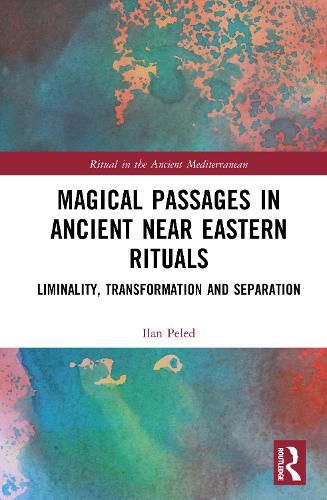Readings Newsletter
Become a Readings Member to make your shopping experience even easier.
Sign in or sign up for free!
You’re not far away from qualifying for FREE standard shipping within Australia
You’ve qualified for FREE standard shipping within Australia
The cart is loading…






This book focuses on the element of thresholds - makeshift gates, makeshift structures and house doors - as concepts of liminality in ancient Near Eastern magical rituals and the idea of transformation they reflect.
Readers gain an in-depth understanding of theories of liminality and rites of passage and how they illuminate fascinating aspects of social behavior and religious and cultic practices in ancient Near Eastern societies, specifically Hatti and Mesopotamia. Ritual liminality, manifested in the use of makeshift and permanent architectural elements, was meant to facilitate two different aims: transformation from one category to the other (using makeshift gates and structures) and separation between categories (using house doors). The book presents the pertinent ritual texts in their original languages, analyzes these texts in detail, and offers comparative discussions of the different cultures that practiced these rituals.
Magical Passages in Ancient Near Eastern Rituals is suitable for students and scholars interested in ancient religions, rituals, and cults, particularly in the ancient Near East, as well as those working on ancient history, philology, anthropology, and religious studies more broadly.
$9.00 standard shipping within Australia
FREE standard shipping within Australia for orders over $100.00
Express & International shipping calculated at checkout
This book focuses on the element of thresholds - makeshift gates, makeshift structures and house doors - as concepts of liminality in ancient Near Eastern magical rituals and the idea of transformation they reflect.
Readers gain an in-depth understanding of theories of liminality and rites of passage and how they illuminate fascinating aspects of social behavior and religious and cultic practices in ancient Near Eastern societies, specifically Hatti and Mesopotamia. Ritual liminality, manifested in the use of makeshift and permanent architectural elements, was meant to facilitate two different aims: transformation from one category to the other (using makeshift gates and structures) and separation between categories (using house doors). The book presents the pertinent ritual texts in their original languages, analyzes these texts in detail, and offers comparative discussions of the different cultures that practiced these rituals.
Magical Passages in Ancient Near Eastern Rituals is suitable for students and scholars interested in ancient religions, rituals, and cults, particularly in the ancient Near East, as well as those working on ancient history, philology, anthropology, and religious studies more broadly.